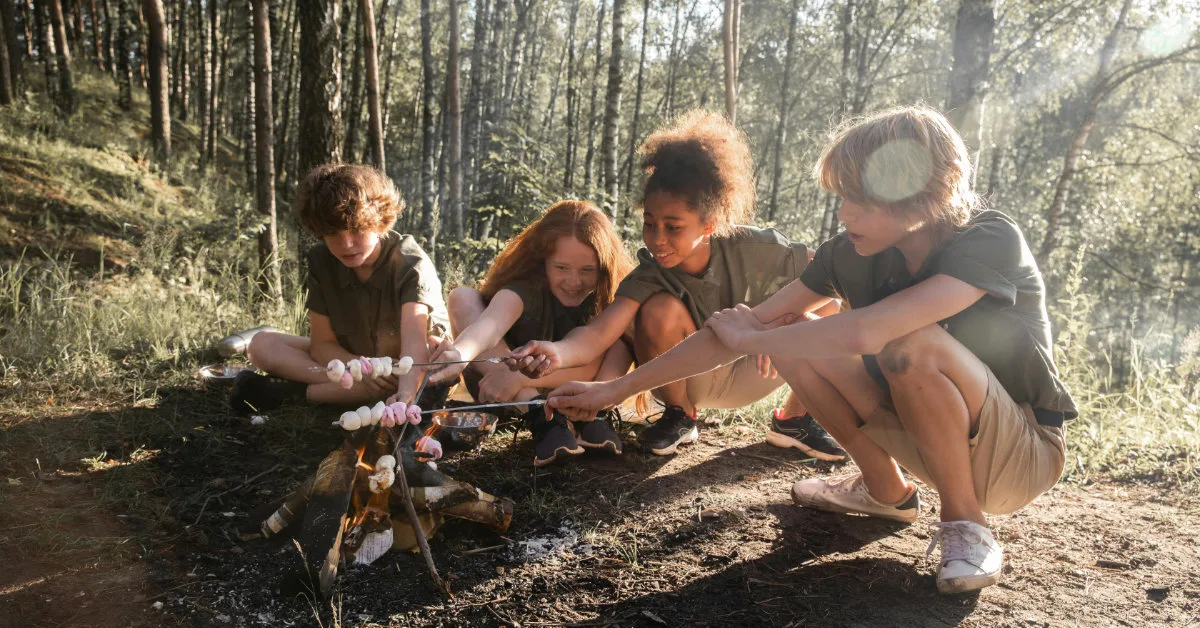Tips and Advice
A Beginner’s Guide to Camping with Kids
Camping is a wonderful way to bond with your children, instilling a love for the outdoors and creating lasting memories. However, taking kids on a camping trip requires careful planning and preparation to ensure a fun and safe experience. Here’s a beginner’s guide to camping with kids, complete with tips and tricks to help make your adventure enjoyable for the whole family.
1. Choose the Right Destination
Family-Friendly Campsites
When selecting a campsite, look for family-friendly locations that offer amenities such as bathrooms, running water, and power points. Many campsites have facilities designed with families in mind, such as playgrounds, splash pools or easy access to hiking trails. By choosing sites which provide safe environments and various recreational activities suitable for children, you’re also likely to encounter like-minded campers who are more than tolerant of the sound of kids playing.
Consider Accessibility
When camping with kids, choose a campsite that is easy to access. Avoid locations that require long hikes or difficult terrains to reach, especially with young children. Look for sites close to your vehicle to make loading and unloading gear easier. Be mindful of where ablution blocks are located and the easiest route to them from your pitch, especially with small children.
2. Involve Your Kids in Planning
Collaborative Choices
Involve your kids in the planning process. Let them help choose the destination and activities, which can increase their excitement and investment in the trip. Discuss the various activities you can do, like hiking, swimming, or fishing, and let them pick a few favourites.
Packing List
Create a packing list together. This not only teaches your kids about organization but also ensures they feel included in the preparation. Encourage them to pack their own personal items, like favorite toys or books, to make the camping experience feel more familiar.
3. Essential Gear for Camping with Kids
Family-Friendly Tents
Invest in a spacious tent that can comfortably accommodate your family. Look for tents with easy setup features, such as quick-pitch designs or colour-coded poles. Make sure there’s enough space for everyone to move around and store their gear.
Sleeping Arrangements
Comfortable sleeping arrangements are crucial for a good night’s sleep. Bring sleeping bags suitable for the season and consider inflatable sleeping pads or stretchers for added comfort. If your kids are younger, you might want to bring a portable crib or travel bed.
Lighting
Make sure that you have suitable lighting solutions for both your tent and outside on the campsite. Dimmable lights are ideal for children who may be less confident in the dark, and even children who handle nighttime like a champ may gain some extra reassurance from having an easy-to-operate light at hand in a new environment. Always have torches for moving about the campsite at night – you don’t want to lose your way or run into any unexpected critters on your way to and from the bathrooms.
Safety Gear
Safety should always be a priority, especially when you’re camping with kids. A well-stocked first aid kit is essential. Include sunscreen, insect repellent, and any necessary medications. Teaching kids basic safety rules, like staying near the campsite and recognizing wildlife, will help keep them safe.
4. Plan Activities
Nature Exploration
Encourage your children to explore nature. Organize nature scavenger hunts where they can search for specific plants, animals, or rocks. This fosters curiosity and appreciation for the environment. You can also teach them to identify different species of trees, birds, or insects – age-appropriate illustrated field guides are a great resource.
Braai Time or Campfire Fun
Braais and campfires are a highlight of camping trips. Plan family-friendly activities like storytelling, basic stargazing, or roasting marshmallows for s’mores. Teaching kids how to safely enjoy a braai or campfire experience gets them involved from the start and can create a fun tradition for your family.
Short Hikes
Choose short and easy hiking trails that are appropriate for your kids’ age and skill level. Make hikes engaging by turning them into an adventure. Use a nature guidebook to identify plants or animals along the way, or make it a game by seeing who can spot the most wildlife.
5. Prepare for Challenges
Be Flexible
Kids may have unexpected reactions to camping, whether it’s excitement or anxiety. Be prepared for changes in mood and energy levels. Flexibility in your plans allows you to adapt to their needs, whether that means taking a break or adjusting activities.
Snack and Hydration
Keep kids energized and hydrated. Pack plenty of snacks like fruits, granola bars, and nuts. Ensure everyone drinks enough water throughout the day, especially during hikes or outdoor activities.
6. Emphasize Leave No Trace Principles
Teaching kids about environmental stewardship is a valuable lesson learned through camping. Educate them on the Leave No Trace principles, emphasizing the importance of keeping nature clean and respecting wildlife. Encourage them to pick up after themselves and leave the campsite better than they found it.
Camping with Kids – In Conclusion
Camping with kids can be a rewarding and enriching experience. By choosing the right destination, involving them in the planning process, and preparing appropriately, you can create a family adventure that fosters a love for the outdoors. With the right mindset and a little preparation, your camping trips can lead to unforgettable memories and strengthen family bonds. So pack your gear, embrace the adventure, and get ready to explore the great outdoors together! Happy camping!



